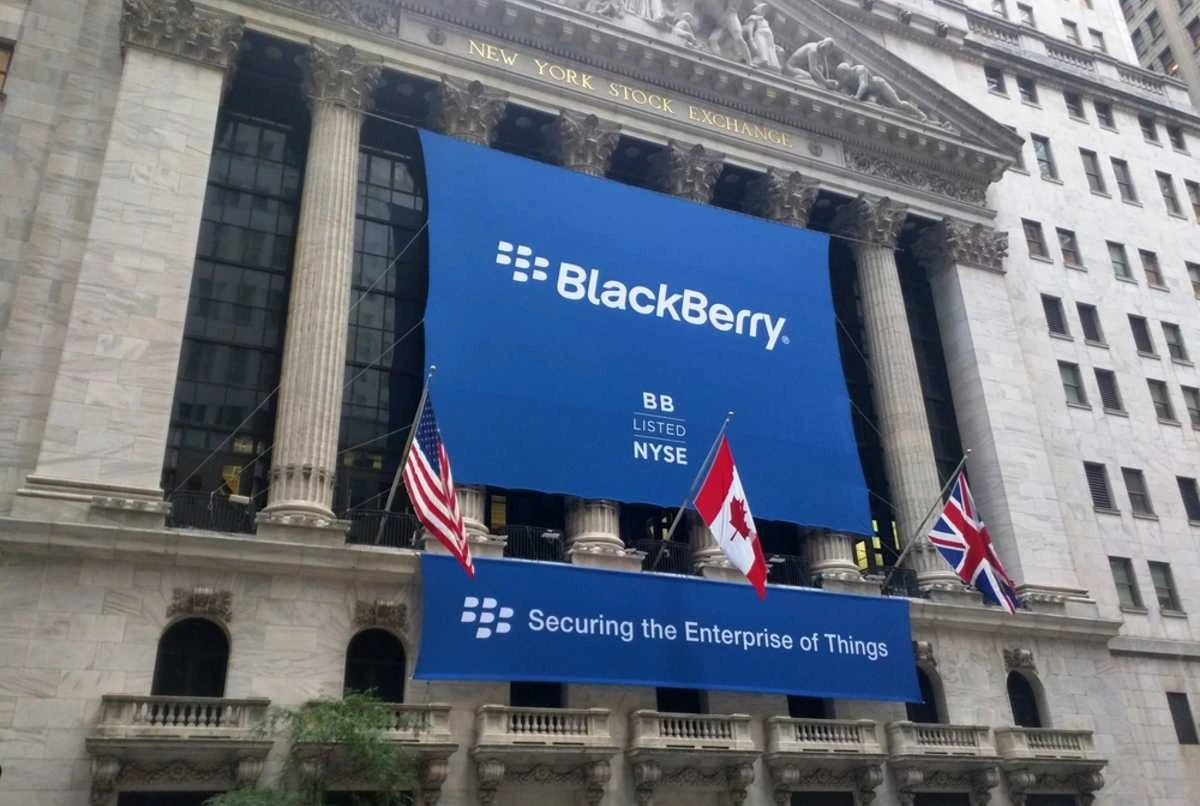BlackBerry reported a net loss of US$19 million in its second quarter, with revenue for the quarter US$145 million, just up from US$144 million during the same quarter last year.
Analysts had been expecting a US$0.03 per share loss, with BlackBerry noting improvement came on the back of double-digit cybersecurity and IoT growth, alongside restructuring efforts.
Loss narrowed to $19 million, or 3 cents a share, for its three months ended Aug. 31, compared with a loss of $42 million, or 7 cents a share, in last year’s quarter.
Revenues from the Cybersecurity business totaled $87 million, up 10% year over year and exceeded the company’s revenue guidance of $82-$86 million. Revenues were driven by strength in the SecuSmart, UEM endpoint management and AtHoc critical events management solutions.
BlackBerry noted that all three solutions registered year-over-year growth and combined revenues increased 24%. Cybersecurity ARR was flat year over year at $279 million.
Revenues from the IoT business totaled $55 million, which was up 12% year over year and surpassed the company’s guidance of $50-$54 million. The uptick was attributed to strong revenues from royalties, especially production-based royalties.
Gross profit increased 10.6% from the year-ago quarter’s actual to $94 million. Gross margin improved to 64.8% from 64.4% in the prior-year quarter.
However, non-GAAP gross margin was 65.5% compared with 65.2% on a year-over-year basis.
Total non-GAAP operating expenses were $99 million, which was down 13%. Adjusted operating loss was $4 million compared with the prior year’s loss of $28 million.
Adjusted EBITDA was breakeven compared with the loss of $22 million in the year-ago quarter. The company had projected adjusted EBITDA loss to be $5-$15 million
BlackBerry used $13 million of net cash in operating activities compared with $56 million in the prior-year quarter.
Licensing and Other contributed $3 million, which was down from $4 million a year ago.
“BlackBerry reached a significant milestone on our path to profitability by recording breakeven adjusted EBITDA and non-GAAP EPS. This result was achieved through a combination of stronger than expected, double-digit revenue growth for both IoT and Cybersecurity, as well as tremendous ongoing progress in rationalizing our cost structure. Operating expenses for the quarter were 24% lower than the baseline for the prior year,” said John J. Giamatteo, CEO, BlackBerry. “
QNX delivered strong royalty revenue again this quarter, and there was year-over-year revenue growth for the secure communications products in our Cybersecurity division.”
Second Quarter Fiscal 2025 Financial Highlights
- Total company revenue was $145 million.
- Total company non-GAAP gross margin was 66% and GAAP gross margin was 65%.
- IoT revenue grew 12% year-over-year and exceeded previously-provided guidance at $55 million; IoT gross margin increased by 1 percentage point to 82%.
- Cybersecurity revenue grew 10% year-over-year and exceeded previously-provided guidance at $87 million; Cybersecurity gross margin increased by 1 percentage point year-over-year to 55%.
- Cybersecurity ARR was flat year-over-year at $279 million; DBNRR increased by 7 percentage points year-over-year and sequentially for the fourth consecutive quarter to 88%.
- Licensing revenue was $3 million.
- Non-GAAP operating loss was $4 million and GAAP operating loss was $21 million.
- Non-GAAP earnings per share improved by $0.04 year-over-year to breakeven, beating the previously-provided guidance. GAAP basic loss per share also improved by $0.04 year-over-year to $0.03.
- Adjusted EBITDA improved by $22 million to breakeven for the quarter.
- Total cash, cash equivalents, short-term and long-term investments was $265 million; Operating cash usage beat expectations and improved by $43 million year-over-year to $13 million.
Business Highlights & Strategic Announcements
- BlackBerry QNX adds QNX Containers to support operating system (OS) virtualization and containerization on QNX-based devices. This provides highly secure and isolated embedded containers while maintaining the high performance and real time nature of QNX OS 8.
- BlackBerry and HaleyTek AB announce the launch of HaleyTek’s Generic Automotive Platform (GAP) cockpit software platform will include the QNX Sound software-defined audio platform.
- BlackBerry launches CylanceMDR Pro, a cutting-edge managed detection and response (MDR) service built on an Open XDR platform powered by AI.
BlackBerry said that it has experienced churn in its Cylance endpoint security business customer base due to more intense competition, hurting its Cylance revenue.
“This remains a very competitive market and this quarter, we continued to see some churn in our customer base that…drove a year-over-year decline in Cylance revenue,” Chief Executive John Giamatteo said in the company’s second-quarter earnings.
Development seat revenues remained muted in the quarter. Management expects significant delays in the ramp-up of automaker software development programs to continue to remain an overhang on the development seat revenues in the near term.
BlackBerry also added that these delays have extended QNX development cycles and will have an “even greater impact” on IVY.
Development seat refers to the process by which automotive manufacturers, or OEMs, use BlackBerry’s QNX platform to develop software for vehicle systems.
Financial Outlook
BlackBerry is providing the following guidance for the third quarter (ending November 30, 2024) and the full fiscal year 2025 (ending February 28, 2025).
For its third fiscal quarter, BlackBerry expects revenue of between $146 million and $154 million, in line with analyst expectations for $151.5 million.
For the full year, the company now expects revenue of between $591 million and $616 million. It previously guided for revenue of between $586 million and $616 million. Wall Street expects revenue of $604.1 million.
| Q3 FY25 | Full fiscal year FY25 | |
|---|---|---|
| Total BlackBerry revenue: | $146 – $154 million | $591 – $616 million |
| IoT revenue: | $56 – $60 million | $225 – $235 million |
| Cybersecurity revenue: | $86 – $90 million | $350 – $365 million |
| Licensing & Other revenue: | Approximately $4 million | Approximately $16 million |
| Adjusted EBITDA: | Breakeven – +$10 million | Breakeven – +$10 million |
| Non-GAAP basic EPS: | ($0.01) – +$0.01 | ($0.05) – ($0.02) |



